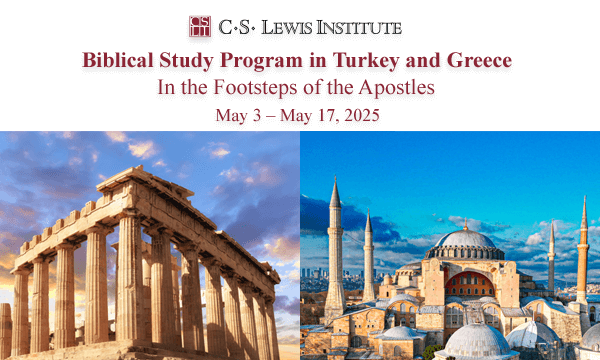Back to series


Are Biblical Manuscripts Reliable?
Click here to open Print - Friendly PDF
It may well come as a shock to some that the manuscript tradition of the Old and New Testaments stands up to rigorous scrutiny. There is a widespread belief that much of the Bible was written centuries after the events it records and that it has been changed and tampered with on the whim of different scribes or interested parties. The breadth and age of the existing ancient manuscripts tell a very different story. However, the next question is invariably: “Just because the manuscripts are reliable, that doesn’t make the content of them true.”
Indeed, it is true that no one argues for the historicity of Homer’s mythology, for example. The manuscripts of his writings may be reasonably intact, but that does not make what he was writing about reliable or accurate historical material. Aren’t the Gospels on the same kind of level—aren’t they just mythological, with true moral value but very little historical reality? Surely accounts involving people walking on water and water turning into wine weren’t meant to be taken as historically true—it’s all mythology, isn’t it? These questions are all very important, and it is true that the Christian must not assume that an unbeliever will accept the content of the biblical text as true simply because the manuscripts themselves have proved to be so trustworthy.
There are a number of questions tied up here. The first issue has to do with our approach to the supernatural world. It is probably true to say that our postmodern society is much more open to the possibility of a supernatural realm than was the Enlightenment modernist worldview of previous generations. However, skepticism about these things does still exist in some portions of the population, and it is important for us to deal with the underlying reasons for this.
Skepticism About the Supernatural World
One possible reason for disbelieving the content of the Gospels and the rest of the Bible is its recording of powerful miraculous events. What is the cause of this disbelief? Is the person assuming a framework in which miracles are a logical impossibility? Has this individual closed their mind to the possibility of miracles and supernatural occurrences? Do they believe only in the natural world and things which are scientifically provable?
This skepticism is based on the ideas of the philosopher David Hume (1711-1776). He argued that all objects of human inquiry are either “relations of ideas” (i.e., mathematical statements and definitions) or “matters of fact” (i.e., everything which can be known and tested empirically). Hume wrote:
When we run over libraries, persuaded of these principles, what havoc must we make? If we take in our hand any volume—of divinity or school metaphysics, for instance—let us ask, does it contain any abstract reasoning concerning quantity or number? No. Does it contain any experimental reasoning concerning matter of fact and existence? No. Commit it then to the flames, for it can contain nothing but sophistry and illusion.
However, there are serious problems with this position. The main one is that Hume’s philosophy fails its own test, because his own statement fits into neither of his categories. As Norman Geisler comments:
The statement that “only analytic or empirical propositions are meaningful” is not itself an analytic (true by definition) or empirical statement. Hence, by its own criteria it is meaningless.
- S. Lewis deals with this kind of materialist approach in his usual lucid manner, showing that a dogmatic commitment to this philosophy makes thinking itself problematic:
It follows that no account of the universe can be true unless that account leaves it possible for our thinking to be a real insight. A theory which explained everything else in the whole universe but which made it impossible to believe that our thinking was valid would be utterly out of court. For that theory would itself have been reached by thinking…. Thus a strict materialism refutes itself for the reasons given long ago by Professor Haldane: “If my mental processes are determined wholly by the motions of atoms in my brain, I have no reason to suppose that my beliefs are true…and hence I have no reason for supposing my brain to be composed of atoms.”

This kind of passionate commitment to a purely material world and the nonpossibility of miraculous interventions from outside is problematic. For the materialist, thinking itself becomes a process which falls outside the remit of that which has capacity for meaning.
The motivation for denying the possible existence of a supernatural realm often seems to be strong, even to the point of demonstrating prejudice. One writer who comes from a materialist viewpoint considers this phenomenon:
It is not that the methods and institutions of science somehow compel us to accept a material explanation of the phenomenal world but on the contrary, that we are forced by our a priori adherence to material causes to create an apparatus of investigation and a set of concepts that produce material explanations, no matter how counter-intuitive, no matter how mystifying to the uninitiated. Moreover, that materialism is an absolute, for we cannot allow a divine foot in the door.
A commitment to the modernist worldview, in which there is nothing other than the empirically testable world around us, means that everything else is seen through a materialist lens (although this lens, of course, is not acknowledged and does not even pass its own test). This kind of a priori commitment to the falseness of the Gospels and the nonpossibility of any miraculous occurrence is a form of closed-mindedness.
The basis on which these views are held—that is, philosophical materialism—is not itself logically consistent and deserves to be challenged. Materialists need to be encouraged to at least be open to the possibility of the supernatural, even if they remain extremely skeptical. To be closed to this possibility is to claim absolute knowledge of the universe—an astounding “godlike” claim.
New Testament miracles. It may be interesting for a skeptic to look at the context of the New Testament miracles. Many of the men and women involved were fishermen or tax collectors, certainly “down-to-earth” types. We read that when Jesus walked on water they were frightened. This is an ordinary reaction to a supernatural event; it is a response that rings true. The reader is being told about these events with the acknowledgment that they are unusual. We are expected to be surprised that these things happened. We read that when Joseph discovered that Mary was pregnant, he wanted to send her away. Again, this is a normal human reaction—he assumes a natural reason for the pregnancy, and is himself convinced otherwise only by a supernatural experience. For a person who is skeptical about the possibility of the miraculous, it may be important to read a Gospel themselves. Many people who have this outlook have never really picked up a Gospel and read it. They may expect it to be a story full of goblins and fairies, not the down-to-earth but marvelous writing that it is.
Intentional Deception?
Just because the manuscript tradition is well attested does not mean that the content contained within it is truthful. While the manuscripts may be genuine ancient copies leaving no room for a hoax, this does not mean that what is written in them is not an attempt at deception. This question may be phrased along the following lines: “The stories were all invented by the writers as a deliberate attempt to inspire followers and to exonerate the disciples’ decision to follow this man Jesus. He didn’t ever want to found a religion, but his followers did.” There are a number of ways of answering this question:
1. Why would the disciples portray themselves in a bad light (e.g., Peter’s denial; their slowness to understand Jesus’ teaching; their lack of faith)?
2. Why is there so much in the New Testament about the cost of Christianity? (Surely they would have given it up after all the suffering, if it was a deception.)
3. Why would they be willing to be killed for their teachings? (For example, Peter was crucified upside down, and Thomas was torn in half.)
As John Stott says: “If anything is clear from the Gospels and the Acts it is that the apostles were sincere. They may have been deceived, if you like, but they were not deceivers. Hypocrites and martyrs are not made of the same stuff.”
Is the New Testament Comprehensible?
 We should remember that many people today have the idea that the Bible is gobbledegook. However, a comparison between the Scriptures and rival literature shows the coherence of the Gospels. Let us take a section of the apocryphal Gospel of Thomas as an example:
We should remember that many people today have the idea that the Bible is gobbledegook. However, a comparison between the Scriptures and rival literature shows the coherence of the Gospels. Let us take a section of the apocryphal Gospel of Thomas as an example:
Jesus said, “I have cast fire on the world and behold, I guard it until it blazes.” Jesus said, “This heaven will pass away and that which is above it will pass away, and the dead were not alive and the living will not die. In the days when you ate what is dead you made it alive; when you come into the light what will you do? On the day when you were one you became two. But when you have become two what will you do?”
The straightforward style of the New Testament Gospels is in stark contrast to this rambling alternative. Even Jesus’ more apocalyptic statements contained in the New Testament Gospels have a coherence and comprehensive style which is notably lacking here.
Other Ancient Literature
Skeptics would be surprised by the number of extrabiblical writings which refer to events and places mentioned by the writers of the Bible. These writings come from a variety of perspectives and backgrounds, demonstrating that at least some of the content of the Bible is credible to the skeptic.
Josephus. Josephus was born in A.D. 37 into a Jewish family, and he joined the Pharisaic party at the age of nineteen. He settled in Rome where he lived under the name of “Flavius Josephus.” He wrote prolifically, and it is in the pages of his books History of the Jewish War and Antiquities of the Jewish People that we come across various references to biblical characters, places and events. He mentions:
1. Figures from the New Testament. The Herods, Pilate, Felix, Festus, the procurators of Judea, the high priestly families of Annas, Caiaphas and Ananias—all these people are referred to by Josephus. He also mentions Judas the Galilean who led an uprising (see Acts 5:37), and at another point “James the brother of the so-called Christ.”
2. Events mentioned by the New Testament. The famine in the days of Claudius (see Acts 11:28).
3. The crucifixion of Jesus. Josephus writes:
And there arose about this time Jesus, a wise man, if indeed we should call him a man; for he was a doer of marvellous deeds, a teacher of men who receive the truth with pleasure. He led away many Jews, and also many of the Greeks. This man was the Christ. And when Pilate had condemned him to the cross on his impeachment by the chief men among us, those who had loved him at first did not cease; for he appeared to them on the third day alive again, the divine prophets having spoken these and thousands of other wonderful things about him; and even now the tribe of Christians, so named after him, has not yet died out.
This passage is controversial and should be handled with care, as many scholars have argued that it is a later interpolation by Christians, trying to prove something about Jesus. It is dismissed on the grounds that Josephus, a Jew, would not have written so positively about the Christian claims about Jesus. However, other scholars argue that the earliest copies of Josephus contain this paragraph, and so if this is an interpolation, a lot more of his writing must be held in question. These scholars also argue that Josephus is speaking in jest and is mocking those who believe in Jesus, and that the overall tone of the passage is heavy with irony and scorn. If this is the case, it is a useful historical document which mentions the bare facts of Christian belief about Jesus the historical person, and as such deserves our attention.
Thallus. Thallus wrote a work tracing the history of Greece and its relations with Asia from the time of the Trojan War to his own day (A.D. 52). Thallus had written about the darkness over the land following Christ’s crucifixion and had tried to dismiss the darkness as being of no religious importance. But by trying to dismiss it, he gives us a historical reference to it. None of his own manuscripts survive, but he is referred to by Julius Africanus in A.D. 221: “Thallus, in the third book of his histories, explains away this darkness as an eclipse of the sun—unreasonably, it seems to me”—unreasonably because it was Passover and hence the time of the full moon.
Tacitus. Tacitus wrote a history of Rome around A.D. 110. When recording the time of Nero, he wrote about that emperor’s horrific decision to burn Rome down:
Therefore to scotch the rumor, Nero substituted as culprits and punished with the utmost refinements of cruelty, a class of men loathed for their vices whom the crowd styled Christians. Christus, from whom they got their name, had been executed by sentence of the procurator Pontius Pilate when Tiberius was emperor; and the pernicious superstition was checked for a short time, only to break out afresh, not only in Judea, the home of the plague, but in Rome itself, where all the horrible and shameful things in the world collect and find a home.
Here we have brief but credible references to the basic facts concerning the death of Christ under Pontius Pilate.
Suetonius. Suetonius wrote biographies of the first twelve Caesars. In his Life of Nero he writes: “Punishment was inflicted on the Christians, a class of men addicted to a novel and mischievous superstition.” In his Life of Claudius he says: “As the Jews were making constant disturbances at the instigation of Chrestus, he expelled them from Rome.”
Plinius Secundus (Pliny the Younger). Pliny was governor of Bithynia in Asia Minor from A.D. 111 to A.D. 113, and he wrote a number of letters to the Emperor Trajan during these two years. In one of these letters he asked for advice on how to deal with Christians:
They were in the habit of meeting on a certain fixed day before it was light, when they sang an anthem to Christ as God, and bound themselves by a solemn oath not to commit any wicked deed, but to abstain from all fraud, theft and adultery, never to break their word, or deny a trust when called upon to honour it; after which it was their custom to separate, and then meet again to partake of food, but food of an ordinary kind.
Has the Bible Been Changed in Transmission?
So we have seen a few examples of extrabiblical historical writers making reference to biblical events, and lending credence to the accuracy of those events. Another question which often follows on from this one (i.e., about the reliability of the content of the biblical record) concerns whether the Bible has been tampered with by different copyists. Some people have an image in their minds of many generations of scribes reproducing the biblical manuscripts for distribution, and each generation adding its own changes, so that what we have now bears little resemblance to the original and cannot be trusted.

However, the reality is that the textual variants that do exist are mostly single letters or grammatical differences. Our modern translations are extremely forthcoming at mentioning these minor differences; they are not hidden away but clearly noted and referenced in the margins and footnotes on each page. When we bear in mind that we are talking about large numbers of ancient, hand-copied manuscripts (around 24,000 manuscript copies for the New Testament alone), the Bible we have today is astoundingly free from questions. The scholar Norman Geisler comments:
Only about one-eighth of all the variants had any weight as most of them are merely mechanical matters such as spelling or style. Of the whole, then, only about one-sixtieth rise above “trivialities” or can in any sense be called “substantial variations.”
The Talmudists. The Old Testament text is similarly robust. The Talmudists reproduced Old Testament manuscripts between A.D. 270 and A.D. 500. They were religious scholars who commented on and explained the Old Testament to the Jewish community. They had an intricate set of regulations which they followed in order to ensure the integrity of the manuscripts they were producing.
The Masoretes. The Masoretes took on the laborious job of editing and standardizing the Old Testament text between A.D. 500 and A.D. 900, working from the manuscripts that were available to them. F.F. Bruce writes:
With the greatest imaginable reverence, they devised a complicated system of safeguard against scribal slips. They counted, for example, the number of times each letter of the alphabet occurs in each book; they pointed out the middle letter of the Pentateuch and the middle letter of the whole Hebrew Bible, and made even more detailed calculations than these.
This kind of respect for the integrity of the text is important for us to remember, if we are to gain a true picture of how the Bible has been transmitted from ancient times until today. Popular images of ancient scribes making things up as they went along, and changing texts at will, are a travesty of what actually happened. The motivation of those who transmitted the texts was that successive generations would be able to find truth for themselves in the pages of Scripture. The integrity of the content of Scripture was of paramount importance to them. We now have to make our own minds up about whether that content is actually true or not, but to hide behind an idea that it has been corrupted and changed in transmission is a little disingenuous.

Amy Orr-Ewing
Speaker Dr. Amy Orr-Ewing is an international author, speaker and theologian who addresses the deep questions of our day with meaningful answers found in the Christian Faith. Travelling internationally Amy is a regular speaker across university campuses, businesses, parliaments, churches and conferences as well as on TV and radio. She holds a PhD in Theology from the University of Oxford and is the author of multiple publications and books including ‘Where is God in All the Suffering?’ and bestselling, ‘Why Trust the Bible?’ COPYRIGHT: This publication is published by C.S. Lewis Institute; 8001 Braddock Road, Suite 301; Springfield, VA 22151. Portions of the publication may be reproduced for noncommercial, local church or ministry use without prior permission. Electronic copies of the PDF files may be duplicated and transmitted via e-mail for personal and church use. Articles may not be modified without prior written permission of the Institute. For questions, contact the Institute: 703.914.5602 or email us.
COPYRIGHT: This publication is published by C.S. Lewis Institute; 8001 Braddock Road, Suite 301; Springfield, VA 22151. Portions of the publication may be reproduced for noncommercial, local church or ministry use without prior permission. Electronic copies of the PDF files may be duplicated and transmitted via e-mail for personal and church use. Articles may not be modified without prior written permission of the Institute. For questions, contact the Institute: 703.914.5602 or email us.
-
Recent Podcasts
A Welcome Change in Apologetics
by Randy Newman on April 18, 2025Apologetics has for a long time, been motivated...Read More
-
Resisting God – Dr. John W. Taylor’s Story
by Jana Harmon, John Taylor on April 11, 2025
-
The Defiance of Grace in the Ministry of Christ
by Dane Ortlund, Aimee Riegert on April 4, 2025
-
Recent Publications
Who Is The Real Jesus?
by John R.W. Stott on April 1, 2025The 21st century has provoked many conversations and...Read More
-
Does the Modern World Face a Crisis of Meaning?
by Cameron McAllister on March 1, 2025
-
The Impact of Technology on the Christian Life
by Tony Reinke on February 14, 2025
0
All Booked
0.00
All Booked
0.00
All Booked
18008
GLOBAL EVENT: 2025 Turkey & Greece Study Program – In the Footsteps of the Apostles
https://www.cslewisinstitute.org/?event=global-event-2023-biblical-study-program-of-israel&event_date=2025-05-03®=1
https://www.paypal.com/cgi-bin/webscr
2025-05-03

Next coming event
Days
Hours
Minutes
Seconds
GLOBAL EVENT: 2025 Turkey & Greece Study Program – In the Footsteps of the Apostles
On May 3, 2025 at 3:00 pmat İstanbul, TürkiyeSpeakers

Amy Orr-Ewing
Speaker
Team Members






